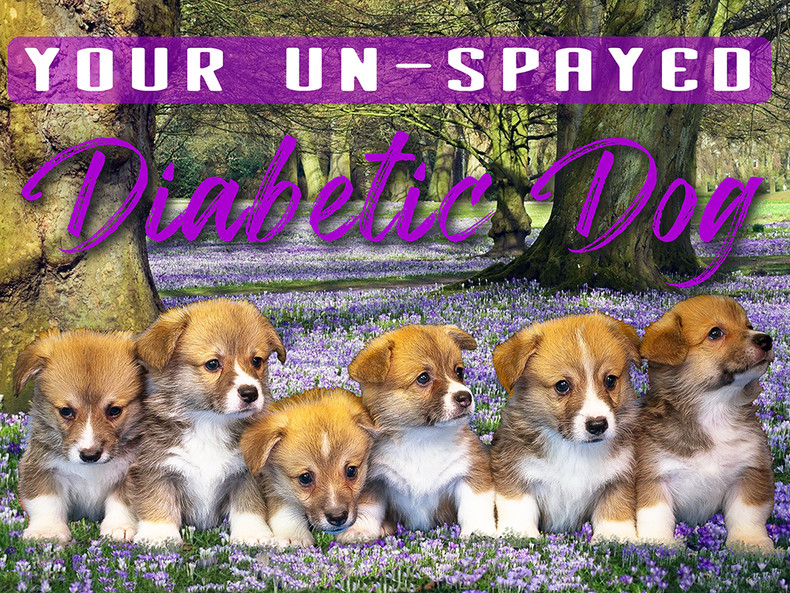You Un-Spayed Diabetic Dog
Today we talk about a topic that will not be relevant to many of you, but for the few of you that it is relevant, please pay attention. If your sweet girl is intact (not spayed), please have her spayed ASAP. Besides the normal reasons of the chance of pyometria, mammary tumors, etc. un-spayed females with Diabetes are incredibly hard to regulate and in many cases the complications can lead to death. I wish that weren’t the case, but sadly we have seen it a few times.
When your pup goes into heat, there is a large presence of progesterone. Progesterone is an insulin antagonist which means that your pup won’t respond to the insulin that she needs to manage her diabetes. This can lead to ketone production and DKA (Diabetic Ketoacidosis) and in some cases pancreatitis is also in the mix as a result of high BG (Blood Glucose) numbers. The combination of DKA and pancreatitis is incredibly serious and not something that can be treated at home. It is a medical emergency and will require several days in the hospital or ER and a favorable outcome is not guaranteed.
Here is the bright side to having your now Diabetic girl spayed… In some cases, albeit rarely, the Diabetes diagnosis can reverse as a result of the surgery! In our Facebook group, we have seen this maybe 3-4 times, which isn’t a lot, but oh what an amazing thing! There are so few situations where this reversal is a possibility. Spaying your girl just happens to be one of them.
We have talked about how to prepare for the day of the surgery in a prior post, so maybe have a look back at that one to refresh your memory on what to expect on the day of the procedure and how you can prepare both you and your pup.
Once the surgery is done, you will need to be VERY diligent in testing as even if the diabetes doesn’t reverse, likely your insulin needs will decrease because you don’t have the added complication of hormones in the mix. Remember that you can ALWAYS decrease insulin by as much is needed to keep your pup safe; its increasing doses that that we do slowly and in small increments.
After your pup has recovered, if you start to see numbers that are lower and within non-diabetic range (70-140), you will need to confer with your vet about reducing your overall dose and perhaps stopping insulin altogether for a while to see if your girl stays in a non-diabetic range. We have seen many cases where the diagnosis doesn’t reverse, but insulin needs definitely reduce. In this scenario, your meter is absolutely your best friend. If you haven’t started testing, please consider learning especially if you have an un-spayed female.
You’ll notice that for most of the products or groups that I mention, the text is linked to a website that you can purchase that item or a link to join the group mentioned. Just click on the colored text (red or blue, depending what device you are on) and it should take you right to the item or group. If you have any thoughts or ideas for topics that you’d like to see covered here, please feel free to comment below or send me an email at NancyForPetTest@PharmasSupply.com. As always, please “like” this blog post or any of the others that have helped you or just refreshed your memory. Look for new posts every Monday, Wednesday and Friday!
Until next time…

